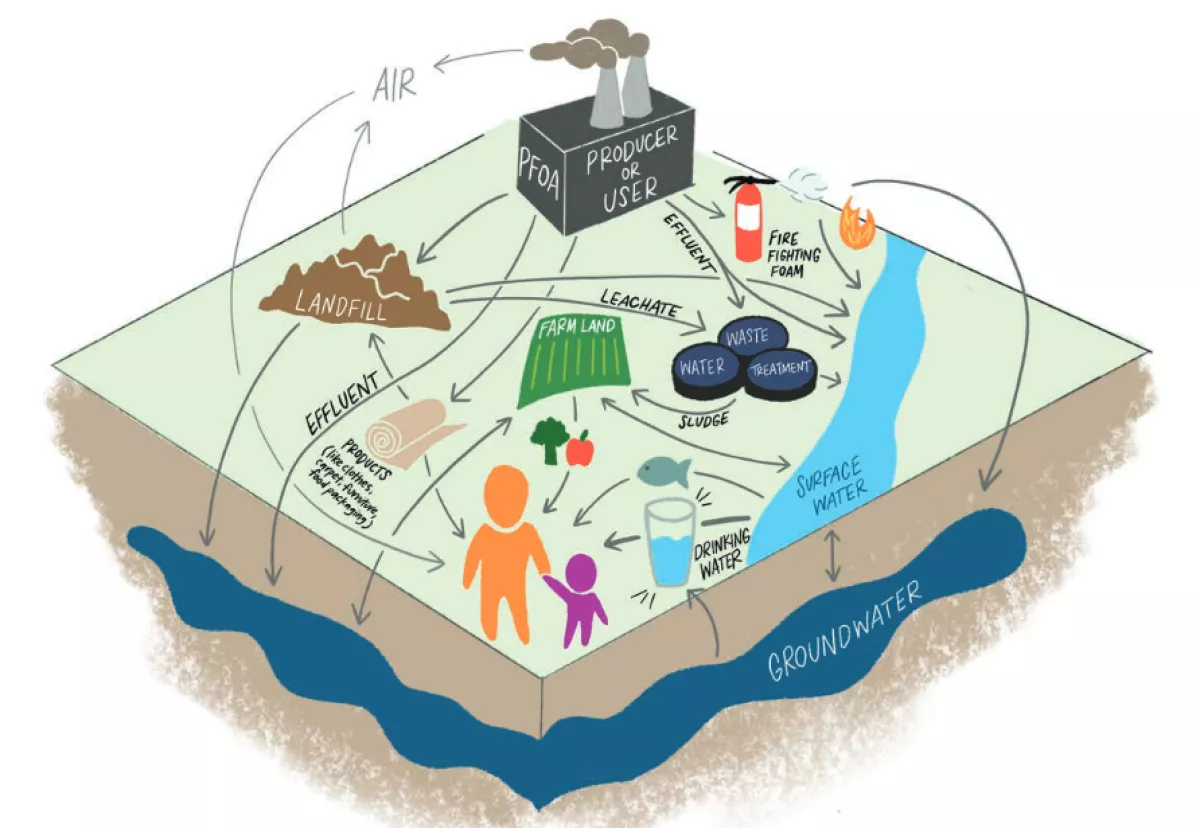"Forever chemicals" modify our genes leading to weaker brain protective functions
Highly toxic fluorinated chemicals, known as PFAS or "forever chemicals", are used in hundreds of everyday products. These chemicals accumulate in our bodies and never break down in the environment. Even at very low levels, PFAS exposure has been linked to cancer, reproductive issues, immune system damage, and other serious health problems. They are widely present in water, soil, and even the human brain, with virtually all citizens in the developed world believed to have been exposed to these chemicals. Scientists have long raised the alarm on their significant health concerns, with a recent study now shedding light on how these persistent chemicals disrupt brain functions despite the protection of the blood-brain barrier.
The PFAS story began in the United States of America in 1946, when cookware manufacturer DuPont introduced nonstick pans and pots coated with a PFAS chemical marketed as Teflon. According to the Environmental Working Group (EWG), an NGO fighting to bring awareness to the issues relating to the forever chemicals and pushing for relevant legislation to limit their use in everyday products, this innovation led to the development of thousands of fluorinated compounds used for nonstick, stain-resistant, and waterproof applications. While it was DuPont that first invented this group of chemicals, the 3M company became its primary manufacturer, significantly contributing to its widespread production and use around the world.
The article reveals that chemical companies have concealed evidence of PFAS-related health risks for decades. Studies conducted in the US show that nearly all Americans, including newborns, have PFAS in their blood with over 200 million people in the US feared to be consuming PFAS-contaminated water.

The new research, published in ACS Chemical Neuroscience journal, identified 11 genes that consistently respond to PFAS exposure, serving as potential markers for detecting and monitoring PFAS-induced neurotoxicity. The findings suggest that PFAS reduce the activity of genes vital for neuron survival, weakening protective functions in the brain. Simultaneously, genes associated with cell death become more active, increasing the risk of neuronal damage and dysfunction. This dual effect underlines how PFAS contribute to long-term neurological harm.
Each PFAS compound interacts uniquely with biological systems, despite shared chemical characteristics. Among the six compounds studied, perfluorooctanoic acid (PFOA)—previously used in nonstick cookware—stood out for its dramatic impact. PFOA altered the expression of nearly 600 genes, affecting pathways related to oxidative stress, protein synthesis, and neural function. Specifically, it downregulated mesencephalic astrocyte-derived neurotrophic factor, essential for neuron survival, and upregulated thioredoxin-interacting protein, linked to cell death.
While short-chain PFAS are considered less persistent and potentially safer alternatives, they may carry their own health risks. According to an article on the Earth publication on the new data, researchers emphasize the need to understand why some PFAS are more harmful than others to phase out the worst offenders and identify safer substitutes. This nuanced approach could balance industrial needs with environmental and human safety.
The study highlights the pervasiveness of PFAS in everyday products like food packaging, firefighting foams, and semiconductors, underscoring the challenge of mitigating their impact while maintaining their utility. Researchers hope their findings will inspire further studies to explore how various PFAS compounds affect human biology, paving the way for better detection methods, protective measures, and safer alternatives.
By Nazrin Sadigova








